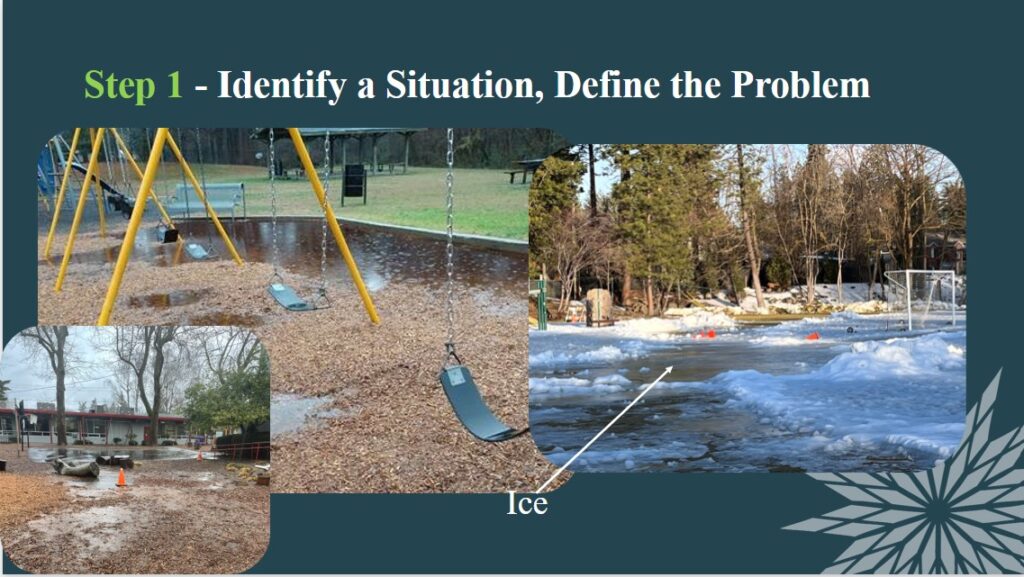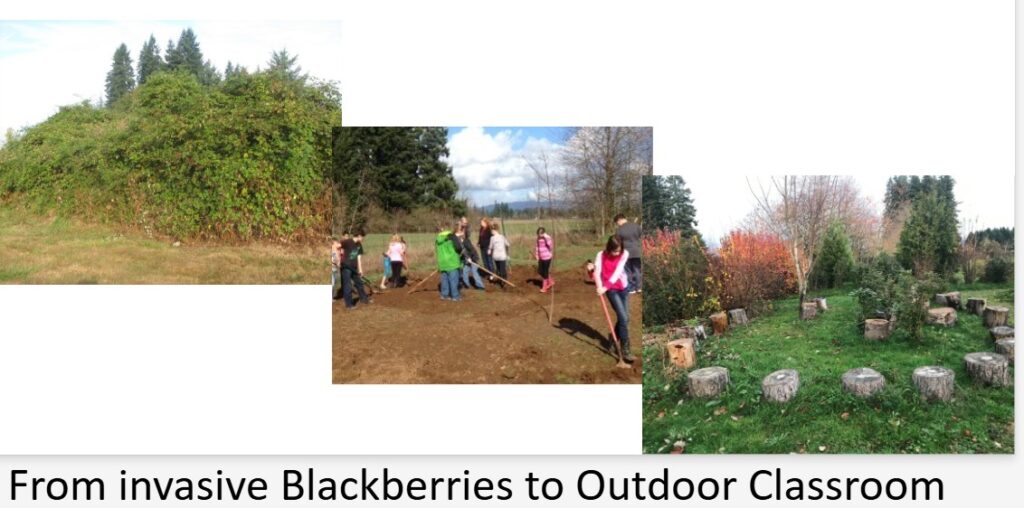Himalayan blackberries are notable for three reasons: they aren’t native to Washington State, they tend to take over whatever landscape they inhabit and, okay, they’re delicious. What to do about them? Teachers from two different schools in separate regions of the state grappled with this question at PEI’s FieldDesign: Engineering Design for Field-Based Applications workshop in February and March. The statewide workshop included smaller sessions broken out by region and grade level band.
Both teachers had blackberries on their school grounds, but they approached the issue differently. “One of them wanted to take the blackberries out and plant something else with their students,” says Emily Newman, PEI’s Lower Columbia FieldSTEM Coordinator, “and the other is planning to train them to stay in one place to add biodiversity and habitat for animals. It was interesting to see the different perspectives of the same problem.”
“I feel confident moving forward and empowering my students to be actively involved in this process. I am excited to get my students outside and start hearing what they notice and wonder.”
— FieldDesign Workshop Participant

That example perfectly encapsulates FieldDesign, a dynamic framework for educators to integrate engineering principles with the larger community while fostering hands-on learning experiences for students. It uses student-generated questions based on outdoor observation as the foundation for stepping into the engineering and design process. The two-part online workshop introduced over 60 educators from throughout the state to the framework, along with real-world examples and an asynchronous task they needed to complete between sessions.
As part of the first session, participants went outdoors and completed an ‘OWL’ chart – Observing, Wondering and Learning – to define a potential engineering problem on their school grounds. They also read and discussed ‘Problems with Problems,’ a Next Generation Science Standards (NGSS) article about the difference between using engineering solutions to drive learning versus designing something for its own sake or as a competition with no meaningful application.
“There were a lot of positive responses to that article,” says Amy Dawley, PEI’s Eastern Washington FieldSTEM Coordinator. “Teachers appreciated that reframe from competitive or prescriptive engineering tasks like ‘who can build the tallest tower’ as opposed to having students think about a problem that is relevant to their school or neighborhood.”
Guest speaker Mark Watrin grounded the concept with specific examples of student-led projects on school grounds, with before and after photos of increased biodiversity and school gardens. Watrin is a former teacher and founder of the Center for Agricultural Science and Environmental Education (CASEE) in Battleground, Washington. “Mark emphasized that it’s okay to start small, move slowly and go with student interest rather than what the teacher wants,” says Newman. “That way the students can take ownership of the project.”
“Mark blew me away,” says Dawley. “He kept making connections to the FieldDesign guide and all the concepts we were trying to communicate, and he did it in a palatable way for teachers. It was a nice way for them to understand what it takes, the steps to go through and who to involve.”
During the two-week break before the next session, teachers looked for problems on their school grounds that could potentially be solved through engineering and design and developed three ways to solve the engineering problem. When they returned to the second online session, they shared their ideas with two teachers from their respective regions and began planning for how they could implement them with students. A smaller cohort enrolled in PEI’s Advanced FieldDesign course, led by Dawley and wrapping up in May.
“I feel confident moving forward and empowering my students to be actively involved in this process,” says one participant in a post-workshop evaluation. “I am excited to get my students outside and start hearing what they notice and wonder.”
“I can see endless possibilities with incorporating our math standards into the project my students and I are considering,” reports another. “I love all the writing and documenting.”
Those responses echo a trend Dawley has noticed in previous years. “Teachers enjoy this topic so much because it’s a different way of thinking about engineering and design than most of them are used to,” she says. “It might be a little uncomfortable in the beginning for them to consider taking students outdoors to engage in these engineering practices, but the response has always been so positive after FieldDesign workshops.”
